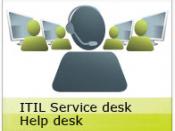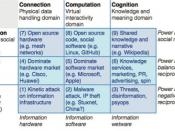What is ITIL (pronounced eye-til)? ITIL describes the relevant relationships between activities that occur within the business processes of an information technology organization, and provides a framework for duplicating experiences between organizations (itSFMI, 2008). It presents information technology services delivery and management in a standardized frame applicable to any technology organization. It was first published by the British government agency, Office of Government Commerce (OGC), as an approach to IT service management in response to IT's demands on organizational resources, and in recognition of the absolute dependence of businesses on technology in the 1990s (Benz & Hendricks, 2004).
Why it is Important to Look at ITILMost organizations today are almost completely reliant on email, Microsoft Office applications, employee share drives, Enterprise Relational databases and other basic IT infrastructure applications and services in order to do their business. If any of these systems go off-line, the productivity of the organization is negatively impacted.
Many of the IT support models for these critical applications and services are the result of sporadic growth, acquisitions, or the result of adding new support tools and personnel only when introducing new technology. Few IT organizations today are the result of a "big picture" IT infrastructure approach.
The British government developed ITIL to specifically address these issues. It found that its mainframe systems were supported differently at each location around the country and around the world, resulting in a wide range of mainframe performance that adversely impacted end user productivity, and an even wider range of support models that drove up costs. To organize this environment, the government developed an "IT Infrastructure Library" that provided the framework for all locations on how they should support these systems, including how the groups should communicate and what was appropriate documentation for the systems. This ITIL concept soon grew to...


